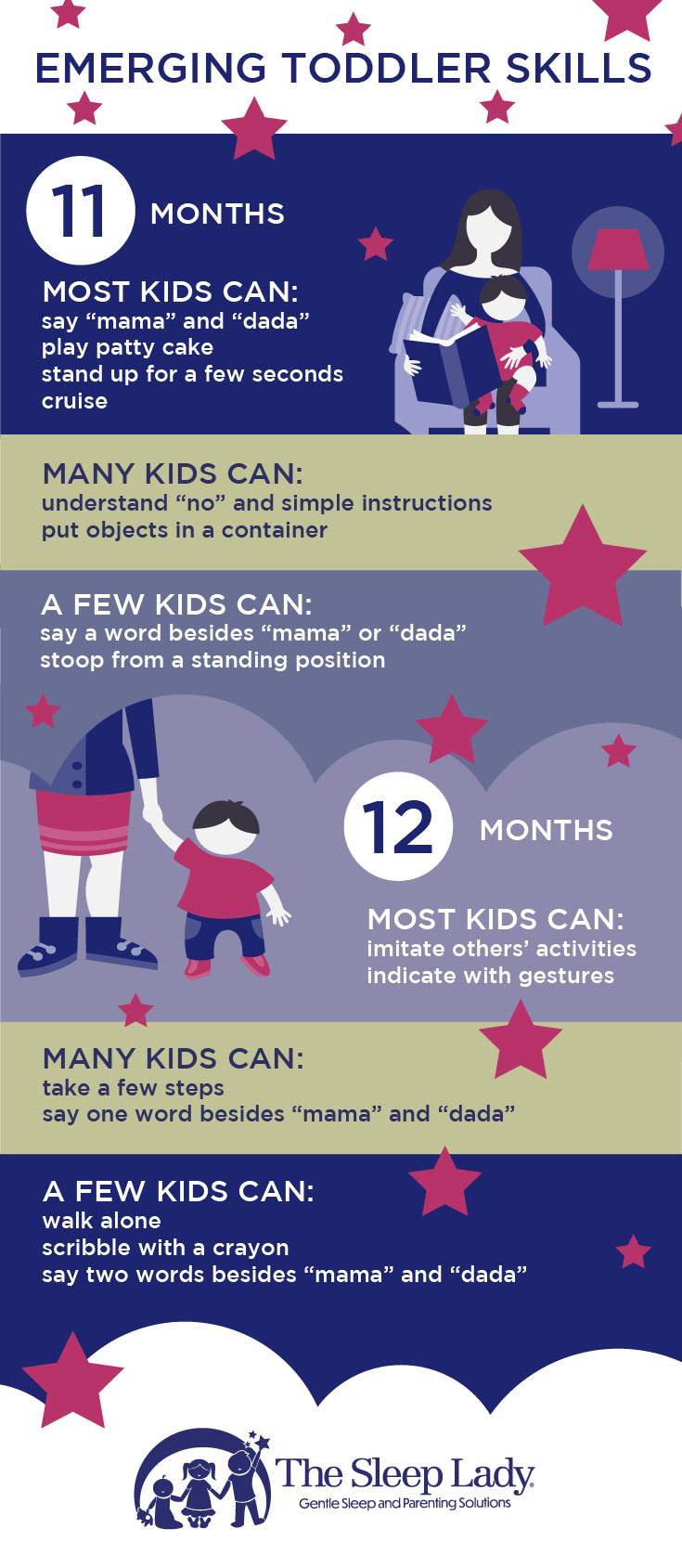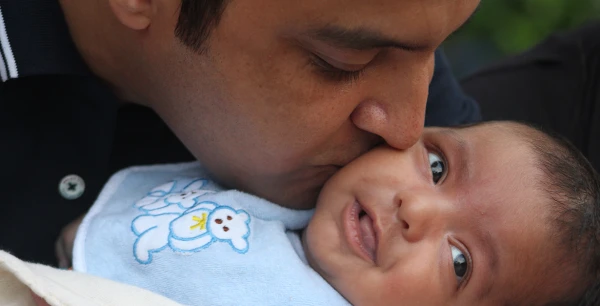Understanding and Managing the 12-Month Sleep Regression
The 12-month sleep regression is a common milestone in infant development that many parents face. Characterized by sudden sleep disturbances in previously good sleepers, this phase often includes frequent nighttime waking, difficulty settling, and nap refusals. While this can feel overwhelming, it’s a natural part of your baby’s growth and signals progress in their cognitive and physical development.
Kim Says: “Sleep regressions are a normal part of growing up and learning new skills. While it can feel like a step backward, this is a time to stay consistent and supportive. Your baby is working hard, both mentally and physically.”
Signs of the 12-Month Sleep Regression
You might be experiencing the 12-month sleep regression if your baby shows signs like:
- Increased fussiness.
- Multiple night wakings.
- Resistance to naps or short “disaster naps.”
- Early morning wake-ups.
- Changes in appetite or hunger.
These behaviors are often tied to your baby’s developmental milestones, such as standing, walking, and saying a few words. At this stage, your baby is growing more independent, but they may also experience separation anxiety, making bedtime and nighttime wake-ups more challenging.
Kim Says: “It’s normal to see naps disrupted first during a regression. Stick to offering two naps a day for as long as possible, even if it feels like your baby is ready to transition to one. At 12 months, most babies still need two naps.”
Why Does It Happen?
At 12 months, several factors can contribute to disrupted sleep:
- Developmental Milestones: Cognitive and motor skills are rapidly advancing. Your baby may be practicing standing, walking, or even saying words like “mama” and “dada,” which can overstimulate their brain and make it harder for them to wind down.
- Teething: Emerging molars often cause discomfort, leading to frequent night wakings.
- Separation Anxiety: Babies become more aware of your absence and may protest more when it’s time to sleep.
- Growth Spurts: Increased hunger or physical needs during a growth spurt can disrupt their usual sleep patterns.
- Changing Sleep Needs: While it may seem like your baby is ready to drop to one nap, it’s usually a temporary phase. Babies typically transition to one nap between 14–18 months.
Kim Says: “Big changes like teething, learning new skills, or even a busy day at a new playground can disrupt your baby’s sleep. These are natural adjustments, but with consistency, your baby will settle back into their routine.”
How to Manage the 12-Month Sleep Regression
Here are practical strategies to help your baby navigate this regression:
- Stick to a Routine: Keep your 12-month-old’s bedtime and nap schedules consistent to give your baby a sense of predictability. A plan like your 11-month sleep schedule could help.
- Support Nap Routines: Even if naps are shorter or harder to achieve, continue offering two naps a day. Use a calming pre-nap routine and adjust wake windows as needed.
- Comfort Without Creating New Habits: Offer reassurance during nighttime wake-ups but avoid relying on sleep props like rocking or feeding. Use Kim’s Sleep Lady Shuffle to provide comfort while encouraging independent sleep.
- Address Teething Pain: Offer safe teething remedies like a chilled teething ring or consult your pediatrician for appropriate pain relief options.
- Avoid Over-Tiredness: Stick to age-appropriate wake windows and consider an earlier bedtime if your baby seems especially fussy or tired.
Kim Says: “Your baby is working through exciting and sometimes overwhelming changes. Extra hugs, cuddles, and a predictable routine will help them feel safe and secure during this phase.”
Extra Support Helps
Watching your baby struggle with sleep is hard. Losing sleep yourself is hard, too. Just like the 4-month, 7-month, and 9-month sleep regressions, this phase is temporary. You can help your baby get through it more smoothly by:
- Offering Extra Comfort: Provide reassurance and closeness during bedtime and nighttime wake-ups.
- Feeding Frequently If Needed: Growth spurts can make your baby hungrier—ensure they’re getting enough nourishment during the day to reduce nighttime hunger.
- Avoiding Sleep Props: While it’s tempting to rock or feed your baby to sleep, these habits can be hard to break later. Use gentle strategies like The Shuffle to help your baby learn to self-soothe.
- Sleep Training your 12-month-old could help.
Kim Says: “Regressions can test your patience, but staying consistent with healthy sleep habits is key. You’ll get through this phase, and your baby will emerge stronger and more confident.”
Prioritizing Self-Care During Sleep Regressions
Sleep regressions are as challenging for parents as they are for babies. When your little one is waking frequently, resisting naps, or struggling with sleep, it’s easy to put your own needs aside. However, prioritizing your well-being is crucial—not just for you, but for your ability to support your baby through this phase.
Why Self-Care Matters
When parents are well-rested and healthy, they’re better equipped to handle the ups and downs of sleep regressions. Practicing self-care helps maintain your overall health and emotional resilience, allowing you to respond to your baby’s needs with patience and consistency.
Kim Says: “You can’t pour from an empty cup. Adequate sleep and small moments of self-care are essential to help you stay calm, focused, and positive while navigating your child’s sleep challenges.”
Practical Self-Care Tips for Parents
- Prioritize Your Sleep: Trade off night shifts with a partner, nap during your baby’s daytime sleep, or ask a family member for help so you can rest. Even short stretches of sleep can make a big difference.
- Stay Consistent With Positive Sleep Habits: Ensure you’re modeling healthy sleep practices for your baby, like winding down before bed and maintaining a predictable schedule.
- Take Moments for Yourself: Practice self-soothing strategies, such as deep breathing, journaling, or a quick walk, to recharge during stressful moments.
- Reach Out for Support: Sleep regressions can feel isolating, but leaning on friends, family, or a sleep coach can provide relief and reassurance.
Kim Says: “Taking care of yourself is not a luxury; it’s a necessity. By prioritizing your own well-being, you’re also teaching your baby the importance of healthy habits and emotional resilience.”
Finding Balance During Sleep Regressions
Remember, regressions are temporary. Allow yourself grace during this phase, and focus on small wins—whether it’s a quiet moment with your favorite tea or a short walk to clear your mind. By prioritizing self-care, you’re building the energy and patience needed to support your baby as they work through their sleep difficulties.
Sleep Coaching and Support for 12-Month Sleep Challenges
Sleep regressions can leave parents feeling unsure about how to help their baby (and themselves!) get back to restful nights. Sleep coaching offers a supportive, step-by-step approach to improving your baby’s sleep while addressing the unique needs of your family. Kim West’s Sleep Lady Shuffle is a gentle, responsive sleep coaching method that provides parents with a compassionate, structured way to foster independent sleep skills while maintaining a strong bond with their baby.
Kim Says: “Gentle sleep coaching means you don’t have to choose between teaching your baby to sleep and responding to their needs. The Sleep Lady Shuffle is about supporting your baby as they learn the skills to fall asleep on their own—with love and reassurance every step of the way.”
How Kim’s Method Compares
Unlike harsher sleep coaching approaches, such as cry-it-out or methods that emphasize minimal parental involvement, Kim’s Sleep Lady Shuffle prioritizes staying physically present with your baby while gradually encouraging independent sleep.
| Method | Key Features | Kim’s View |
|---|---|---|
| Cry-It-Out (CIO) | Baby left to self-soothe with little to no parental interaction. | Not recommended. Kim emphasizes that crying without comfort can undermine attachment. |
| Chair Method | Parent stays in the room but gradually reduces interaction over time. | Similar to the Shuffle but with less emphasis on verbal and physical reassurance. |
| Sleep Lady Shuffle | Parents stay with the baby, offering verbal and physical reassurance while gradually moving away from the crib. | Kim’s preferred approach for fostering both secure attachment and independent sleep skills. |
Kim Says: “Some parents worry that sleep coaching means ignoring their baby’s needs, but the Sleep Lady Shuffle ensures you’re always there to provide comfort as they learn to self-soothe. It’s about building confidence, not creating stress.”
Key Elements of Gentle Sleep Coaching
- Build a Healthy Sleep Foundation: A consistent bedtime routine, exposure to natural light during the day, and age-appropriate wake windows all help establish a healthy circadian rhythm.
- Optimize the Sleep Environment: Use blackout curtains, a white noise machine, and a cool, quiet room to eliminate external disturbances and foster a calming sleep space.
- Use The Shuffle for Gentle Sleep Coaching: Place your baby in their crib drowsy but awake. Stay by their side, offering reassurance with gentle pats or soothing words. Gradually increase your distance from the crib each night as your baby builds confidence in their ability to fall asleep independently.
- Avoid Creating Sleep Props: If your baby is relying on rocking, feeding, or holding to fall asleep, the Shuffle helps transition them to self-soothing skills in a supportive way.
- Leverage Professional Support When Needed: Sometimes, families benefit from working with a pediatric sleep consultant for tailored guidance. Sleep consultants can help you refine your approach and create a personalized sleep training plan based on your baby’s specific needs and temperament.
Kim Says: “Consistency is key when it comes to sleep coaching. With gentle, structured guidance, your baby will learn to link sleep cycles independently, and you’ll see improvements in their—and your—overall sleep quality.”
Why Choose Gentle Sleep Coaching?
Parents often feel torn between addressing their baby’s sleep challenges and maintaining a responsive, loving bond. Kim’s approach bridges this gap by ensuring babies feel secure while they develop independent sleep skills.
Kim Says: “Gentle sleep coaching is about meeting your baby where they are—both developmentally and emotionally. It’s not just about better sleep; it’s about building trust and connection.”
FAQs: Your Sleep Regression Questions Answered
1. How Long Does the 12-Month Sleep Regression Last?
The 12-month sleep regression typically lasts 2–6 weeks, depending on your baby and the consistency of your approach.
2. Should I Transition to One Nap?
No, most 12-month-olds still need two naps. Even if naps are shorter or resisted, continue offering two naps until your baby is developmentally ready to transition, usually closer to 14–18 months.
3. How Can I Help with Separation Anxiety?
Introduce a comfort object like a lovey, practice short separations during the day, and stay consistent with your bedtime routine to reassure your baby.
4. What If Sleep Issues Persist?
If sleep struggles continue beyond six weeks or significantly impact your baby’s well-being, consider consulting a pediatric sleep expert for tailored guidance.
Closing Encouragement
The 12-month sleep regression is a sign of growth and progress. While it can be tough, this phase is temporary. By staying consistent, offering extra comfort, and maintaining good sleep habits, you’ll help your baby settle back into restful sleep. Remember, you’re not alone—lean on your support system and take care of yourself, too. Restful nights are on the horizon!
Kim Says: “Every regression is a step forward in disguise. Your baby is growing, learning, and thriving—even if it doesn’t feel like it during those sleepless nights. Stay the course; better sleep is just around the corner.”






